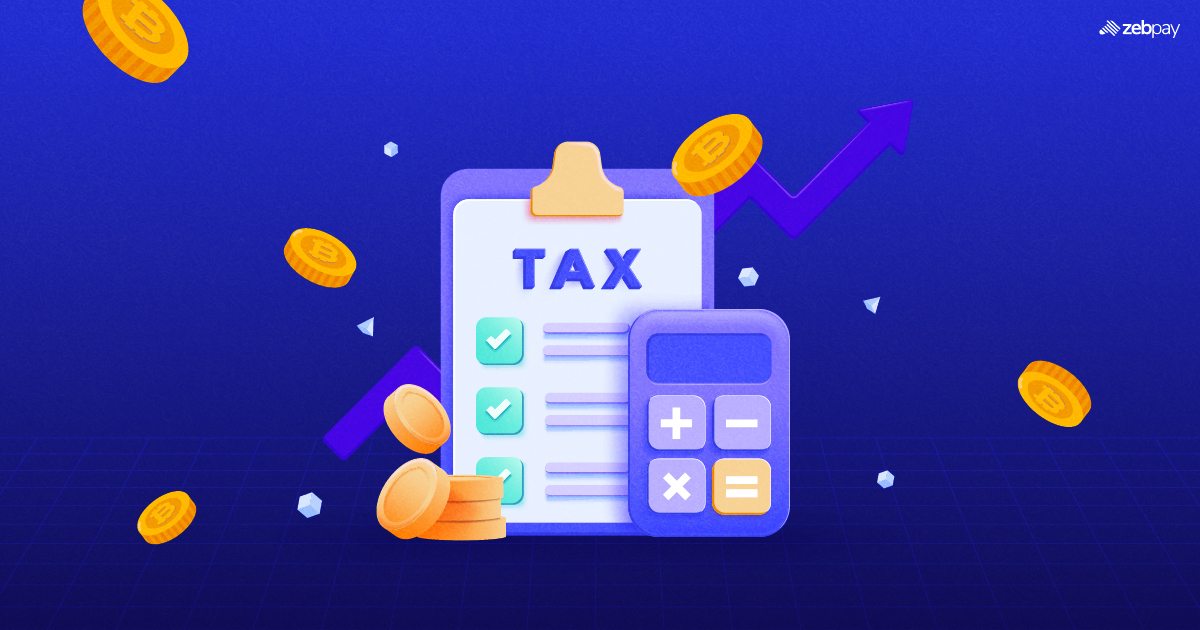Crypto trading has surged in popularity over the past few years, attracting everyone from seasoned professionals to curious newcomers, many of whom have witnessed impressive gains. However, beneath the excitement lies a complex ecosystem that can feel intimidating without the right knowledge. Prices move rapidly, markets operate 24/7, and a single trade can involve multiple variables—from entry price and exit price to fees and market volatility.
One of the most critical skills for navigating this space is understanding how to calculate profit and loss (P/L). P/L tells you whether a trade has made you money or resulted in a loss, and more importantly, how much. It forms the foundation of every trading decision, helping you evaluate performance, manage risk, set realistic targets, and refine your strategy over time.
Without a clear grasp of how P/L works in crypto trading, it’s easy to misjudge your returns, overlook hidden costs, or make emotional decisions based on incomplete information. So, how exactly is profit and loss calculated in crypto—and what factors influence it? Let’s break it down!
Also Read: Top 10 Crypto Exchanges in India for 2026
What Is Crypto Profit and Loss (P&L) in Portfolio Tracking?
Crypto profit and loss (P&L) in portfolio tracking refers to the measurement of how much you have gained or lost on your crypto holdings over a specific period of time. It compares the current value of your assets with the price at which they were acquired, giving you a clear snapshot of your portfolio’s performance.
In simple terms, profit occurs when the market value of your crypto assets rises above your buying price, while a loss is recorded when the value falls below it. Portfolio tracking tools automatically calculate this by factoring in key details such as purchase price, quantity held, transaction fees, and the latest market prices.
P&L in portfolio tracking can be viewed in two main ways:
- Unrealised P&L, which shows gains or losses on assets you still hold and have not sold yet.
- Realised P&L, which reflects the actual profit or loss locked in after you close a trade or sell an asset.
By tracking P&L at a portfolio level, traders and investors can assess overall performance rather than focusing on individual trades alone. It helps identify which assets are performing well, which are dragging returns down, and whether your strategy is aligned with your financial goals. Ultimately, portfolio P&L acts as a financial health check for your crypto investments, enabling more informed and disciplined decision-making.
Why Do We Calculate Crypto Profit and Loss?
Keeping track of your investments and their returns is one of the most crucial aspects of trading, especially in a volatile market like crypto. Tracking your profits and losses makes it much easier to manage your portfolio effectively. It allows you to identify and remove assets that perform poorly while adapting and improving your crypto trading strategies.
Making many trades on several different tokens within a day can also complicate the returns you get. If you choose to take advantage of minute changes in the price of a single token, you may lose on some trades and win on others. Monitoring your total returns in such situations helps you understand whether your process is successful and profitable.
How To Calculate Crypto Gains and Losses?
Method 1: Profits from Opening and Closing Positions
You can monitor performance using open and closed positions. Typically, an open position is any initial trade you make in the market while closing a position refers to a trade in the other direction. For example, if you buy 1 ETH on an exchange, that is an open position. It becomes a closed position when you sell that token.
Grouping your trades into open and closed positions helps organize your trading activity. This grouping can also be made based on time – such as short-term and long-term trades. This can help you identify which kinds of trades are profitable and which ones are not.
Read more: How To Pick A Crypto For Day Trading
Method 2: Transaction-wise Calculation
Sometimes if you make multiple trades in the same asset over a short period, it can be beneficial to calculate your returns from each transaction.
This can be done using the formula s – c = p, where s is the selling price, c is the cost of the asset including fees and p is the profit. This is done because the cost and selling price change with each new trade you make.
Method 3: Year-to-Date
This method is best suited to investors that buy crypto and hold it for a long duration. It is simply comparing the value of your portfolio at the beginning and end of a year. This may be a calendar or financial year, based on your requirements.
YTD calculation gives you your unrealized profit. Unrealized profit refers to any returns that have not been converted into cash or cash equivalents like bank holdings or a stablecoin. Assume you hold $100 worth of BTC on 1st Jan 2022 and $200 of ETH on 1st Jan 2023, then your unrealized profit is $100 in 2023.
Bonus Method: Percentage Profit
This method is commonly used when you want your trades to match a specific benchmark. Assume you want every trade to give you a 10% profit. To verify whether this is fulfilled, you must multiply the cost of the investment by 1.1 to find your ideal selling price.
Also Read: Top 10 Cryptos to Invest in January 2026
Why Accurate Crypto P&L Calculation Matters for Investors
Accurately calculating profit and loss (P&L) is essential for crypto investors because it provides a true picture of investment performance. In a market known for sharp price swings and round-the-clock trading, even small miscalculations can lead to incorrect assumptions about profitability and risk.
First, precise P&L tracking helps investors make informed decisions. Knowing exactly how much you’ve gained or lost allows you to decide whether to hold, buy more, or exit a position based on data rather than emotions. It also helps in evaluating whether a trading strategy is actually working or simply benefiting from short-term market movements.
Second, accurate P&L calculation plays a crucial role in risk management. By understanding real returns after accounting for transaction fees, spreads, and slippage, investors can set better stop-loss levels, position sizes, and profit targets. This clarity reduces the chances of overexposure and unexpected losses.
Accurate P&L is also important for long-term portfolio planning. It enables investors to compare the performance of different assets, rebalance portfolios effectively, and allocate capital toward cryptocurrencies that align with their risk appetite and goals.
Finally, proper P&L tracking supports transparency and compliance. For many investors, especially active traders, clear records of gains and losses are necessary for financial reporting and tax purposes. Without accurate calculations, investors risk underestimating liabilities or misreporting returns.
In short, accurate crypto P&L calculation is not just about knowing whether you are in profit or loss—it is about building discipline, improving decision-making, and maintaining control in an otherwise volatile market.
Realised vs Unrealised Crypto Profit and Loss Explained
In crypto trading, profit and loss can be classified into two categories: realised and unrealised. Realised P&L refers to the profit or loss that is confirmed once a trade is closed. This happens when you sell, swap, or exit a position, effectively locking in the outcome. Realised P&L reflects actual gains or losses that impact your available capital.
Unrealised P&L, on the other hand, represents the paper gains or losses on assets you still hold. It is calculated based on the current market price compared to your entry price. While unrealised P&L helps track portfolio performance in real time, it can change rapidly with market movements and does not become final until the position is closed.
How Entry Price, Exit Price, and Fees Affect Crypto P&L
Crypto P&L is primarily determined by the difference between your entry price (the price at which you bought an asset) and your exit price (the price at which you sold it). A higher exit price than entry price results in a profit, while the opposite leads to a loss.
However, transaction fees significantly influence the final outcome. Trading fees, withdrawal fees, and network charges reduce net profits or deepen losses. Even small fees can add up over frequent trades, making it essential to include them when calculating true P&L.
How to Calculate Crypto Profit and Loss Across Multiple Trades
When executing multiple trades in the same asset, calculating P&L becomes more complex. Investors typically use accounting methods such as FIFO (First-In, First-Out) or average cost to determine the cost basis for each sale.
By aggregating profits and losses from all closed trades, investors can calculate total realised P&L over a given period. This approach provides a clearer understanding of overall trading performance rather than focusing on individual transactions.
How to Calculate Crypto P&L for a Diversified Portfolio
A diversified crypto portfolio often includes multiple assets purchased at different prices and times. To calculate portfolio-level P&L, investors compare the total current value of all holdings with the total invested capital, including fees.
This holistic view highlights which assets contribute most to gains or losses and helps investors rebalance their portfolios effectively. It also allows for better assessment of diversification benefits and risk exposure.
Tracking Profit and Loss Across Multiple Exchanges and Wallets
Many crypto investors use multiple exchanges and wallets, making P&L tracking more challenging. Each platform may have different fee structures, trade histories, and reporting formats.
To maintain accuracy, investors need consolidated tracking that accounts for transfers between wallets and exchanges. Proper tracking ensures internal transfers are not mistakenly recorded as profits or losses, preserving the integrity of portfolio data.
How Stablecoins and Fiat Conversions Impact Crypto P&L
Stablecoins and fiat conversions play an important role in crypto P&L calculations. Converting crypto into stablecoins like USDT or USDC may trigger realised P&L events, depending on the jurisdiction and accounting method.
Similarly, moving between crypto and fiat currencies introduces additional variables such as exchange rates and conversion fees. These factors can affect final returns and should always be included when calculating overall profit or loss.
How Crypto Profit and Loss Is Used for Tax Reporting
Crypto P&L forms the foundation of tax reporting in many regions. Realised gains and losses from trades, conversions, and disposals are often subject to capital gains tax or income tax, depending on local regulations.
Accurate P&L records help investors calculate tax liabilities correctly, offset gains with losses where permitted, and avoid compliance issues. Maintaining detailed transaction histories is critical for smooth tax filing.
Common Mistakes to Avoid When Calculating Crypto Gains and Losses
One common mistake is ignoring fees, which leads to overstated profits. Another is failing to track multiple entries and exits correctly, resulting in inaccurate cost basis calculations.
Investors also often confuse unrealised gains with realised profits, making premature financial decisions. Lastly, overlooking transfers between wallets or exchanges can distort P&L data. Avoiding these errors ensures a more accurate and reliable assessment of crypto trading performance.
Conclusion
Understanding how profit and loss (P&L) works in crypto trading is essential for anyone looking to invest or trade with confidence. In a fast-moving and highly volatile market, accurate P&L calculation goes beyond simply knowing whether you are in profit or loss—it helps you measure true performance, manage risk effectively, and make informed, data-driven decisions.
By clearly distinguishing between realised and unrealised P&L, accounting for entry and exit prices, fees, multiple trades, and portfolio diversification, investors can gain a complete and realistic view of their crypto journey. Tracking P&L across exchanges and wallets, factoring in stablecoin and fiat conversions, and maintaining accurate records also become critical as portfolios grow in size and complexity.
Ultimately, disciplined P&L tracking brings structure and clarity to crypto investing. It enables better strategy evaluation, supports long-term portfolio planning, and ensures readiness for tax reporting and compliance. Whether you are a beginner or an experienced trader, mastering crypto P&L is a foundational step toward smarter, more sustainable participation in the crypto markets.
In the grand scheme of things, ZebPay blogs are here to provide you with crypto wisdom. Get started today and join 6 million+ registered users to explore endless features on ZebPay!
FAQs On Calculating Crypto P&L
How to calculate your crypto profit?
Depending on how you trade, you can calculate your profit using Year-to-Date or the transaction-to-transaction method.
Why is crypto profit and loss important?
Finding your profit and loss from each asset or trade is the only way to reliably determine your portfolio’s performance.
What can I use to calculate profit and loss?
There are many crypto portfolio calculators available for simple investment return calculations. Alternatively, you can download your portfolio returns as a spreadsheet to conduct a more in-depth analysis of it.
Is it necessary to calculate the profit and loss of my crypto portfolio?
Calculating the profit and loss of your crypto portfolio helps you gain insights into your investment performance, evaluate your trading strategies, and make informed decisions regarding your crypto assets.
Should I consider tax implications when calculating crypto profit and loss?
Yes, it is essential to consider the tax implications of your crypto investments. Depending on your jurisdiction, you may be required to report and pay taxes on your crypto gains. Consult with a tax professional or visit platforms like to ensure compliance with tax regulations.
What are some additional factors to consider when calculating crypto profit and loss?
When calculating profit and loss, consider other factors such as transaction fees, exchange rates, and the timing of your transactions. These factors can impact the overall profitability of your crypto investments.
How often should I calculate the profit and loss of my crypto portfolio?
It is recommended to calculate the profit and loss of your crypto portfolio at regular intervals, especially after significant transactions or market fluctuations. This helps you stay updated on your investment performance and make timely adjustments if necessary.
Can I use the profit and loss calculation to track individual crypto performance?
Yes, by calculating the profit and loss of each crypto asset separately, you can track the performance of individual assets in your portfolio and identify potential winners or losers. ZebPay’s Profit and Loss features help you analyse your portfolio in complete depth, along with individual coin breakdowns.







